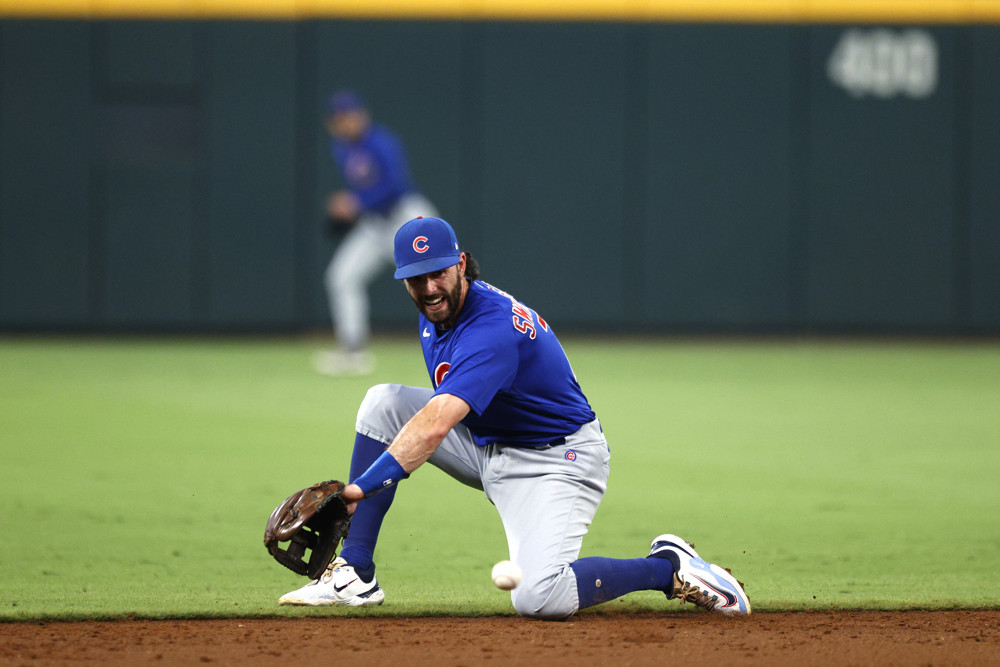Photo: Allan Dranberg/Icon Sportswire
Hunter Brown finished 2024 with a 3.49 ERA in 170 innings pitched, but there was much more to his season than reducing it to those numbers.
In his last 19 starts, Brown pitched to a 2.20 ERA and averaged six innings per start. He allowed only 7 home runs in 114 2/3 innings pitched. From June 8 on, he was as good as just about anyone.
That Brown’s season ERA was considerably higher than 2.20 was the product of some rough early-season starts, one in particular against the Royals when he allowed 9 runs and 11 hits in 2/3 of an inning.
Brown made the Top 10 list for the pitchers who underachieved the most in 2024. He’s a bit of an outlier in that he’s the one pitcher on that list who had—in sum—a good season by stats like ERA. It could have been a great one.
Brown’s .667 OPS allowed was 68 points higher than his expected OPS. His .599 expected OPS was 11th-lowest in baseball among pitchers with at least 300 batters faced (starting pitchers ahead of him were Paul Skenes, Chris Sale, Blake Snell, Tarik Skubal, Tyler Glasnow, and Bryan Woo). His .667 actual OPS was still pretty good, but by rank, it was 54th.
A brief point of explanation:
Sports Info Solutions tracks its own version of a player’s expected stats (similar to what you can find on Baseball Savant). Rather than basing a player’s hit probability (and therefore single, double, triple, and home run probability) on a batted ball’s exit velocity and launch angle, SIS’ version estimates probabilities based on where balls are hit, how hard they are hit, and how long they spend in the air.
This allows us to compare a player’s actual stats to his expected stats to see if they fared better or worse than perhaps they could have.
Here’s the list of pitchers with the greatest differential between their actual OPS and their expected OPS. Think of them as a group whose actual 2024 numbers could have been better under different circumstances.
Biggest Difference Between Actual OPS and Expected OPS
Minimum 300 Batters Faced in 2024
| Pitcher | Actual OPS | Expected OPS | Difference |
| Carson Spiers | .887 | .793 | .094 |
| Walker Buehler | .862 | .772 | .090 |
| Reid Detmers | .864 | .777 | .087 |
| Logan Allen | .918 | .843 | .075 |
| Slade Cecconi | .863 | .792 | .071 |
| Hunter Brown | .667 | .599 | .068 |
| Chris Flexen | .824 | .760 | .064 |
| Taijuan Walker | .975 | .913 | .062 |
| Marcus Stroman | .780 | .718 | .062 |
| Mitch Spence | .786 | .727 | .059 |
Carson Spiers (No. 1), Chris Flexen (No. 7) and Mitch Spence (No. 10) can all point to a lack of defensive support. Flexen’s teams had -17 Runs Saved behind him in 2024, the worst total in MLB. Spence’s -16 ranked second. Spiers’ -11 ranked third. Brown’s numbers may have been more of a case of bad luck than bad defense. The Astros had 2 Runs Saved behind him.
Speaking of defense, there’s the case of Yankees pitcher Marcus Stroman.
Stroman’s OPS against last season was .780, 62 points higher than his expected OPS. The Yankees defense didn’t help him out. They totaled -7 Runs Saved on the batted balls against him. They also had 29 Defensive Misplays and Errors behind him, the most for any team behind any pitcher in 2024.
Without much effort we found four potential fly ball outs that the Yankees outfielders didn’t catch that cost Stroman a run (or more) specifically on that play or within the rest of the inning (here, here, here, and here). Three of those four balls had out probabilities of 90 percent or higher.
Given how reliant Stroman is on his defense because of a lack of strikeouts, he and the Yankees were a bad combination in the back half of the 2024 season (he had a 5.88 ERA in his last 16 appearances).
Another free agent in the Top 10 was Walker Buehler, who was touched for 16 home runs in 75 1/3 innings last regular season, and his OPS allowed was 90 points higher than expected. By our calculations, he was expected to allow 12 home runs, which would have helped bring his 5.38 ERA down a little, though he was still a bit removed from even being an average pitcher. Here’s one example of an unlikely home run against him.
Of course, what’s most memorable about Buehler isn’t his regular season, but his postseason, in which he allowed no runs in 10 innings in his last three appearances and got the final out of the World Series.

